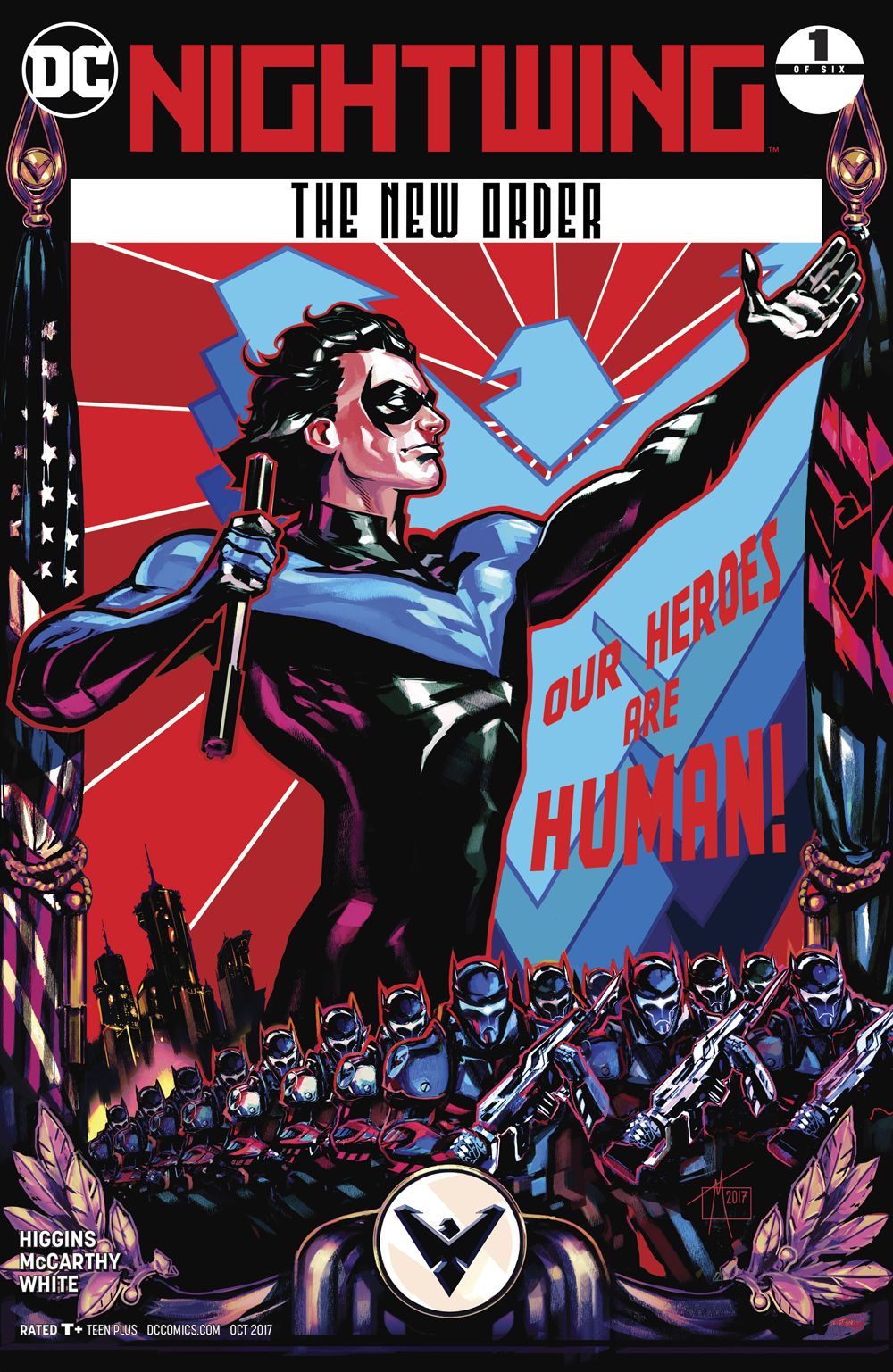REVIEW: Nightwing: The New Order #1
- WRITER
- Kyle Higgins
- Artist
- Trevor McCarthy
- Letterer
- Clayton Cowles
- Cover Artist
- Paul Pope, Lovern Kindzierski, Trevor McCarthy
- Publisher
- DC Comics
- Price
- 3.99
- Release Date
- 2017-08-23
- Colorist
- Dean White
“Even good people can come to believe in really terrible things.”
In Nightwing: The New Order #1, it’s 2040, and 12 years ago Dick Grayson saved the world. Or so he thought. Suppressed abilities and a lower quality of life for a select few became the ultimate price for the “safety” of many. Unfortunately, a state-mandated world without the super-powered isn’t all it’s cracked up to be. And parents, motivated by their sincere desire to protect their children, sometimes make questionable decisions.
INTERVIEW: Higgins Talks Elseworlds & Optimism in Nightwing: The New Order
Writer Kyle Higgins (Mighty Morphin Power Rangers, Nightwing) and artist Trevor McCarthy (Batwoman, Nightwing) are serious Bat-family veterans who have teamed up to send Dick Grayson’s Nightwing on an epic adventure of the Elseworlds-esque variety. Addressing the old question of whether or not supervillains would exist at all if the superheroes didn’t initially challenge the balance of human nature, Higgins and McCarthy’s dystopian future wants to define good and bad in black-and-white terms, but the inevitable shades of gray are about upend its tenuous balance.
This story works because Higgins has such a thorough understanding of Dick Grayson. As Nightwing, he walked on both sides of the rules. As the now middle-aged architect of the New Order, he’s defined a set of rules that are about to transmute from safekeeping measures to fascism. Grayson is now a dad, who is raising his son, Jake, alone. Jake’s mother is not in the picture and never identified, and this mystery will become a vital component of the story in future issues.
The family dinner scene between Jake, Dick, and Alfred becomes a turning point in the issue where we see (for the first time) someone in Dick’s life who is openly opposed to the New Order. Alfred isn’t buying any of Dick’s logic. “I hear the stories, Richard. About the facilities where people are put in ‘stasis.’ For nothing more than being different. How is that something you can believe in?” Higgins tugs on the heartstrings here, as Dick holds to his convictions although it’s just killing him to have earned Alfred’s disapproval.
McCarthy’s vivid art brings to life a Gotham that is at once recognizable yet foreign. It’s almost as if he borrowed a 1980s aesthetic and updated it with today’s technology, with beautiful results. This wise choice removes possibility of it being confused with the current continuity and plants the piece firmly in the realm of an alternative timeline. The thick line work is especially well used in the two-page spread and single-panel pages, and is complemented nicely by Dean White's moody colors. Gotham retains enough of its characteristic darkness that you’ll definitely believe this is a Bat-book, but under the New Order the source of the darkness doesn’t solely emanate from the buildings and bones of the city -- the Crusaders in their stylized Bat-suits provide the ominous vibe here.
A brave and bold interpretation of Nightwing from a creative team that understands exactly what makes him tick, Nightwing: The New Order #1 presents a chilling alternative universe where Dick Grayson will have to fix the world he thought he saved.

